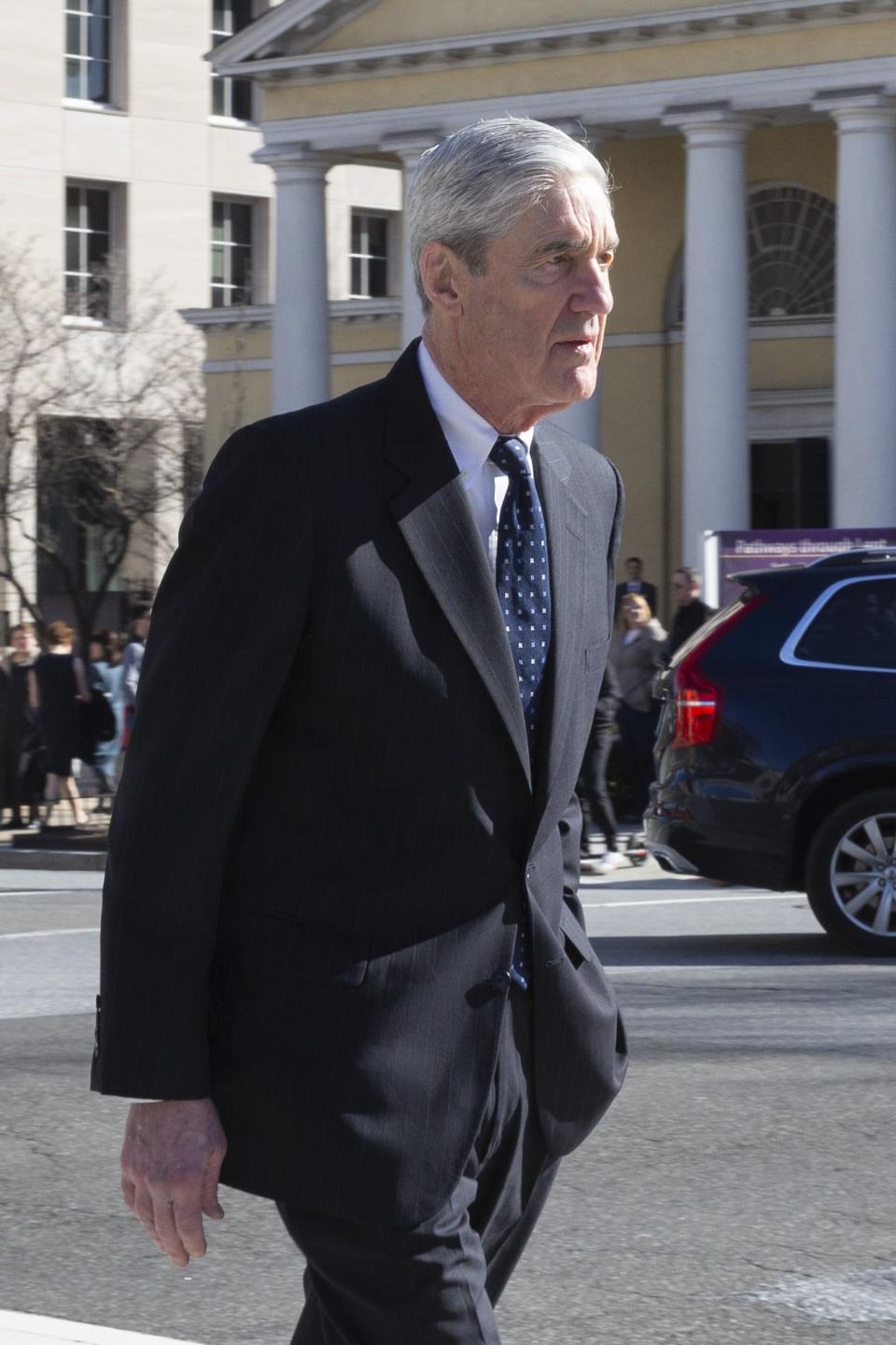St. John's Church has intersected with Donald Trump at key moments of his presidency
WASHINGTON – President Donald Trump's controversial visit to St. John's Church on Monday, made possible after law enforcement used tear gas and shields to clear away peaceful protesters, is not the fist time the historic house of worship has been a noteworthy backdrop to his presidency.
The church, located across Lafayette Square from the White House, has borne witness in some way to seminal moments: Trump's inauguration, the release of the Mueller Report and, this week, the president's effort to exert "law and order" in the middle of civil unrest ignited by the death of George Floyd at the hands of the Minneapolis police.
The Church of Presidents, as it's known, has been graced at least once by every U.S. president since 1816. Those moments have generally been serene or low-key, often befitting a house of worship.

But Trump's intersections with the church, much like his presidency, largely have been met with controversy and conflict.
Inauguration Day
The morning of Jan. 20, 2017, Trump and first lady Melania Trump attended the traditional Inauguration Day church service at St. John’s, where they were met by a small crowd of supporters. Only a few blocks away, a larger group of the president's opponents began gathering as well.
As Trump attended the service and, later, his inauguration, protesters clashed with police on the streets of the nation's capital while attempting to reach the National Mall.
'We'll see' on attacking North Korea
On Sept. 3, 2017, the president and first lady went to the church to mark the National Day of Prayer for victims of Hurricane Harvey, which had brought severe flooding on Houston and other parts of the Gulf Coast.
As the president emerged from church at around 11:35 a.m., Trump was asked whether he would attack North Korea. That nation had just claimed it successfully tested a hydrogen bomb.
Republican blowback: 'Word of God as a political prop': GOP senators criticize Trump after George Floyd protesters forced out of park
Trump paused before saying: "We'll see."
The two leaders would meet later that summer in Singapore in a historic summit.
St. Patrick’s Day
On March 17, 2019, Trump attended St. Patrick’s Day services at St. John’s, but not before airing several grievances that morning on Twitter. In a series of tweets, he criticized "Saturday Night Live," CNN and Sen. John McCain, who had died from an aggressive brain tumor the previous August.
In one tweet, Trump accused "last in his class" McCain, R-Ariz., of working with Democrats by sending “the fake Dossier” to the FBI in hopes it would be published prior to the 2016 election.
So it was indeed (just proven in court papers) “last in his class” (Annapolis) John McCain that sent the Fake Dossier to the FBI and Media hoping to have it printed BEFORE the Election. He & the Dems, working together, failed (as usual). Even the Fake News refused this garbage!
— Donald J. Trump (@realDonaldTrump) March 17, 2019
At the time, Trump claimed on numerous occasions that the Arizona senator had access to a collection of memos compiled by former British spy Christopher Steele. The mostly discredited document focused on Trump’s alleged ties to Russia.
Robert Mueller attends
The following Sunday – March 24, 2019 – Special Counsel Robert Mueller was seen leaving the church after attending morning services on what would turn out to be a fateful day in the Trump presidency.
That afternoon, the former FBI director's summary of his report detailing Russian interference in the 2016 election was released by Attorney General William Barr.

Barr's conclusion that the investigation did not find any evidence of the Trump campaign concluding or conspiring with Russia was widely criticized by Democrats – and a federal judge – as misleading after the full report was made public.
George Floyd protests

On Monday, Trump spoke to reporters from the White House Rose Garden as police cleared protesters from Lafayette Park. Trump declared himself "your president of law and order" before walking to St. John's, which sustained fire damage and vandalism on Sunday. Outside the church, he posed for photos while holding a Bible aloft.
The move was described both as "shameful" by critics and an act of courage by supporters.
"Hard to imagine any other @POTUS having the guts to walk out of the White House like this," former Wisconsin Gov. Scott Walker tweeted along with a black-and-white photo of Trump striding toward St. John's Episcopal Church along with Secret Service agents and administration officials.
The move was decried by the bishop of the Episcopal Diocese of Washington.
"Let me be clear: The president just used a Bible, the most sacred text of the Judeo-Christian tradition, and one of the churches of my diocese without permission as a backdrop for a message antithetical to the teachings of Jesus and everything that our churches stand for," Bishop Mariann Edgar Budde told CNN.
This article originally appeared on USA TODAY: George Floyd protests: Donald Trump's latest link to St. John's Church

